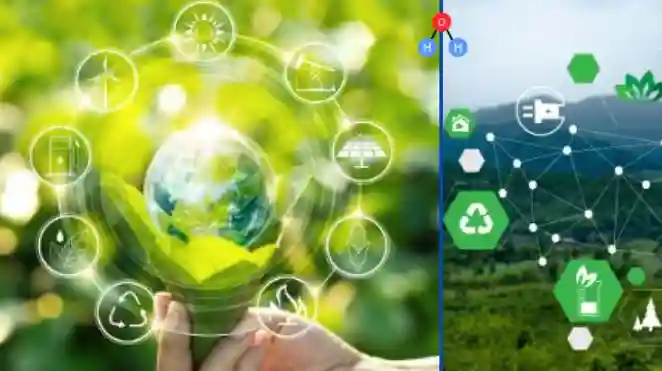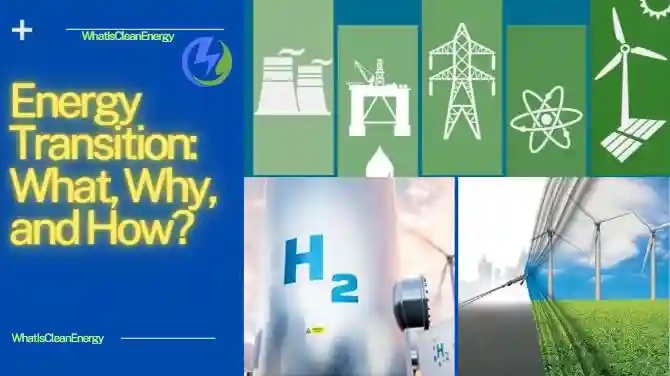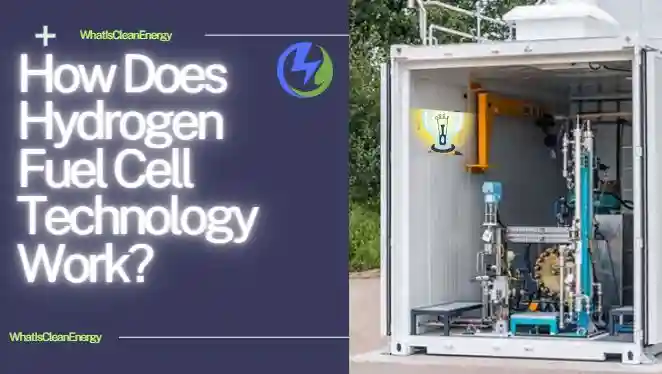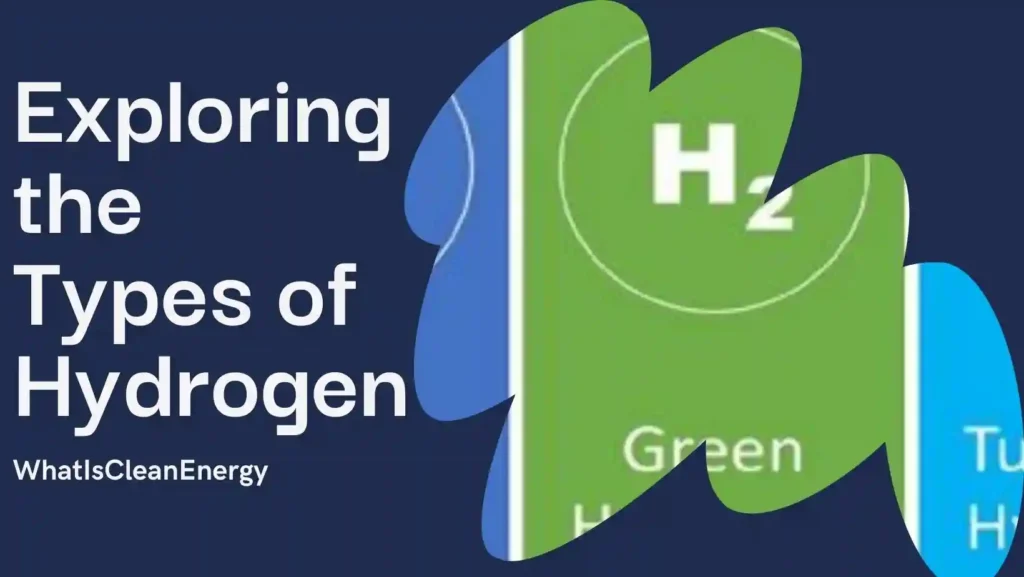Welcome to the world of energy transition. In this journey, we’ll explore what it means, why it’s important, and how we can make it happen. Let’s take small steps to understand this vital shift toward a cleaner and more sustainable energy future.
The global energy landscape is undergoing a monumental shift towards sustainable solutions. As the urgency to combat climate change intensifies, the transition from fossil fuels to renewable energy sources has become a critical focus for governments, businesses, and individuals alike. This transformation, known as the energy transition, is not only essential for reducing greenhouse gas emissions but also for ensuring energy security and fostering economic growth. In this article, we delve into the key aspects of the energy transition, exploring the challenges, opportunities, and innovations that are shaping a greener, more resilient future.
What is energy transition?
Energy transition is the process of changing the way we produce and consume energy. From fossil fuels such as coal, oil, and gas, to renewable sources such as wind, solar, and hydro. It means using energy better, making less pollution, and making sure more people have energy that’s safe and easy to get.1
Energy transition is not a new concept. Throughout history, humans have switched from one energy source to another.
Energy transition depends on what’s available, how much it costs, and the technology we have. In the past, like in the 18th and 19th centuries, we used coal instead of wood and plants during the Industrial Revolution. Then, in the 20th century, oil and natural gas became big for things like transportation and heating.
However, the current energy transition is different from the previous ones in several ways. First, it is driven by the urgent need to mitigate climate change. Its impacts are caused by the accumulation of greenhouse gases in the atmosphere from burning fossil fuels. Second, the rapid development and deployment of renewable energy technologies. This has become more affordable and competitive than ever before. Third, it is influenced by growing awareness. The demand of consumers, investors, and policymakers for cleaner and more sustainable energy solutions.
Why is energy transition important?
The energy transition is important for many reasons. Here are some of them:
- Climate change mitigation: The Intergovernmental Panel on Climate Change (IPCC) says that to keep the Earth’s temperature from rising too much (1.5°C), we have to reduce the CO2 pollution we make by 45% compared to 2010 by 2030. Eventually, we need to get to no net CO2 pollution by around 20502. This means that we need to drastically reduce our reliance on fossil fuels. We have to switch to low-carbon or carbon-neutral energy sources as soon as possible.
- Energy security: Fossil fuels are finite and unevenly distributed around the world. This creates geopolitical tensions, conflicts, and price volatility. Renewable energy sources are abundant and widely available. This will reduce the dependence on imported fuels and enhance the resilience of energy systems.
- Energy access: About 759 million people in the world lack access to electricity. Around 2.6 billion people rely on traditional biomass for cooking and heating. Renewable energy can provide affordable, reliable, and clean energy services to these people. Especially in remote and rural areas where grid extension is not workable or cost-effective.
- Economic development: Renewable energy can create new jobs, industries, and markets. It also stimulates innovation and entrepreneurship. As per the International Renewable Energy Agency (IRENA), using more renewable energy could make the world’s economy grow by 2.4% in 2050. It creates 42 million jobs in the renewable energy sector and saves up to $160 trillion in health and environmental costs.
- Social justice: Energy transition can also contribute to social justice. It makes things fairer by giving power to women and people who have been left out. This helps improve health, happiness, and people’s rights. For example, renewable energy can provide income opportunities for women in rural areas. They can sell excess electricity or offer services such as phone charging or refrigeration. It can also reduce indoor air pollution from burning biomass. This causes about 4 million premature deaths per year.
Challenges in the Energy Transition
- Infrastructure Overhaul: The transition from fossil fuels to renewable energy sources requires massive changes in infrastructure. Upgrading power grids to handle intermittent sources like solar and wind is complex and expensive.
- Economic Impact: The shift can disrupt economies, particularly those dependent on fossil fuel industries. There may be job losses in these sectors, though green jobs will rise.
- Energy Storage: Renewable energy sources are not always available (e.g., solar power isn’t generated at night), making energy storage solutions critical. Current storage technologies, like batteries, need further development to be more efficient and cost-effective.
- Policy and Regulation: Governments need to enact and enforce regulations that encourage the adoption of renewable energy. This often requires overcoming political and industrial resistance.
Opportunities in the Energy Transition
- Economic Growth: Investment in renewable energy can spur economic growth by creating new industries and jobs. The clean energy sector has the potential to be a significant driver of economic activity.
- Technological Advancements: The energy transition promotes innovation in energy technologies, such as improved solar panels, wind turbines, and energy storage systems. This can lead to more efficient and cost-effective energy solutions.
- Environmental Benefits: Reducing dependence on fossil fuels lowers greenhouse gas emissions, contributing to the fight against climate change. This also leads to cleaner air and water, benefiting public health.
- Energy Security: Renewable energy sources, being locally available, can reduce reliance on imported fuels, enhancing energy security for many countries.
Innovations Driving the Energy Transition
- 【Ultra-Smart MPPT Technology】This 12v solar panel battery charger is crafted with SUNER PO…
- 【Improved 3-stages Charging】The improved 3-Stages charging algorithm (Bulk, Absorption, Fl…
- 【Free Maintenance】The solar trickle charger stops charging when battery has full charge, a…
- 【Full Safety Protections】Built-in multiple protections including over-charge, over-dischar…
- 【Wide Compatibility】It’s not just a solar powered battery charger, it’s an advanced solar …

- Advanced Renewables: Innovations in solar, wind, hydro, and geothermal energy are making these sources more efficient and affordable. For example, perovskite solar cells have the potential to significantly boost solar panel efficiency.
- Smart Grids: Smart grid technology allows for more efficient management of electricity supply and demand. It can integrate various renewable energy sources and improve the reliability of the power grid.
- Energy Storage Solutions: Innovations in battery technology, such as solid-state batteries and flow batteries, are crucial for storing renewable energy. Additionally, advancements in hydrogen storage offer promising solutions for long-term energy storage.
- Electric Vehicles (EVs): The rise of electric vehicles is transforming the transportation sector. Innovations in EV technology, including longer battery life and faster charging, are making electric cars more accessible and attractive to consumers.
- Carbon Capture and Storage (CCS): While the focus is on reducing emissions, CCS technology can capture and store CO2 emissions from fossil fuel plants and industrial processes, helping to mitigate their environmental impact during the transition period.
By addressing these challenges, seizing the opportunities, and embracing innovations, we can accelerate the energy transition towards a more sustainable and resilient future.
- Non-stop Power. With its high power output, this solar panel can provide stable …
- User-friendly Design. The cable length of the solar panel is about 3 meters, all…
- Specially Designed for Outdoor. With advanced and durable ETFE material, this so…

How can we achieve energy transition?

The energy transition is a complex and multidimensional challenge. This requires concerted efforts from all stakeholders at all levels. Some of the key actions that ease energy transition are:
- Governments should make clear and ambitious goals to reduce greenhouse gases and use more renewable energy. These goals should match the Paris Agreement and have the right rules and incentives.
- Companies should invest in renewable energy projects that make money, can grow, and are good for the environment. To do this, they need easier access to money, fewer risks, and better market conditions.
- Scientists and inventors should create new technology that makes renewable energy systems work better, use less money, and be affordable. This means improving digital technology, smart grids, energy storage, hydrogen, and other new ideas.
- The public should learn about and get involved with renewable energy. They should know the benefits of clean energy and the problems with fossil fuels. This includes teaching, getting people to take part, and changing how they act.
Conclusion
Switching to cleaner energy sources is crucial for a better future. It’s possible and affordable with renewable energy technology. But it’s tough and needs everyone to work together. So, we must start now to make it happen.
Disclosure: This content is reader-supported. As an Amazon Associate, we earn from qualifying purchases. Thank you for your support!








